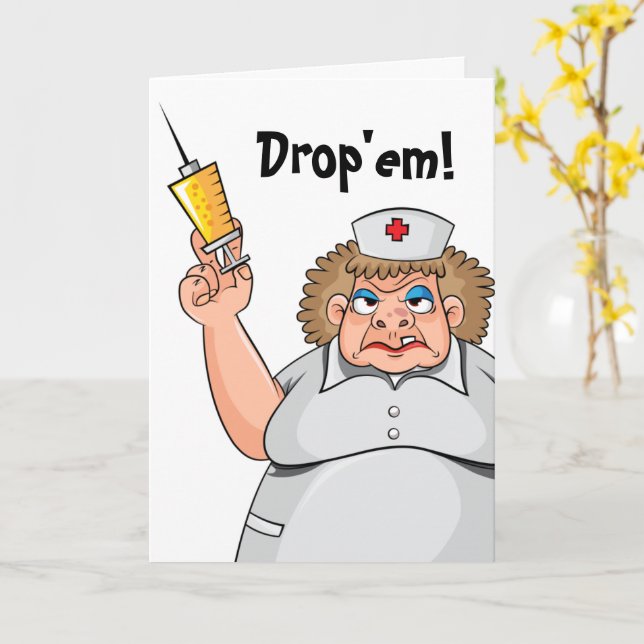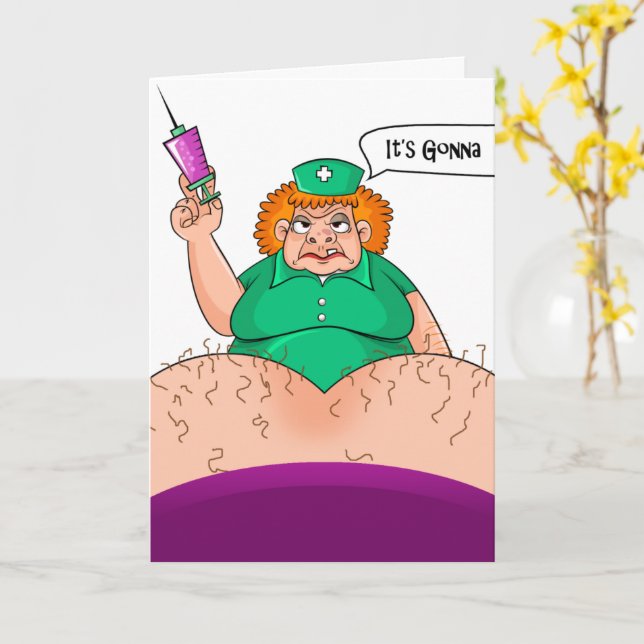A client on warfarin is being discharged. Which food should the nurse teach the client to avoid?
A. Broccoli
B. Apple
C. Rice
D. Banana
Broccoli
A 16-year-old patient with cystic fibrosis is admitted with increased shortness of breath and possible pneumonia. Which nursing activity is most important to include in the patient’s care?
1. Perform postural drainage and chest physiotherapy every 4 hours
2. Allow the patient to decide whether she needs aerosolized medications
3. Place the patient in a private room to decrease the risk of further infection
4. Plan activities to allow at least 8 hours of uninterrupted sleep
What is 1? Perform postural drainage and chest physiotherapy every 4 hours
The term for the soft spots on a newborn’s skull is __________.
Fontanelles
A priority intervention for a patient with COPD exacerbation is __________.
Administer oxygen (low-flow)
Carlos has been admitted to the hospital with a diagnosis of acute pancreatitis, and Nurse Isabella is assessing his pain. What type of pain is associated with this diagnosis?
A. Burning and aching, located in the left lower quadrant and radiating to the leg
B. Severe and unrelenting, located in the epigastric area and radiating to the back
C. Burning and aching, located in the epigastric area and radiating to the umbilicus
D. Severe and unrelenting, located in the left lower quadrant and radiating to the hip
B. Severe and unrelenting, located in the epigastric area and radiating to the back
The pain associated with acute pancreatitis is often severe and unrelenting, is located in the epigastric region, and radiates to the back. It is also described as having a sudden onset, a deep, piercing, continuous, or steady quality. The other options are incorrect.
For triple points
This is carlos's favorite color.
What is Red?
 A client prescribed digoxin has an apical heart rate of 52 bpm.
A client prescribed digoxin has an apical heart rate of 52 bpm.
What is the nurse’s best action?
A. Administer as ordered
B. Hold and notify the provider
C. Give with food
D. Increase oral fluids
Hold and notify the provider
The nurse is caring for two respiratory clients. Which requires immediate attention?
A. A client with COPD requesting repositioning for comfort
B. A client with asthma whose wheezing suddenly stops
C. A client reporting mild shortness of breath after walking to the bathroom
D. A client with O₂ sat 92% on room air after walking
The client with asthma whose wheezing suddenly stops
Which fetal heart rate pattern is most concerning?
A) Accelerations with movement
B) Early decelerations
C) Late decelerations
D) Variable decelerations
C) Late decelerations
A patient with cirrhosis has confusion, tremors, and elevated ammonia. Which treatment is expected?
A) Furosemide
B) Lactulose
C) Metoprolol
D) Atorvastatin
B) Lactulose
A 72-year-old male with a history of hypertension and coronary artery disease is admitted with shortness of breath, fatigue, and swelling in his ankles. Vital signs: BP 158/92, HR 110, RR 26, O2 sat 88% on room air. Auscultation reveals crackles at the lung bases.
Q1: Which assessment finding is MOST concerning?
A) +2 pitting edema in both ankles
B) Oxygen saturation of 88%
C) BP of 158/92
D) Fatigue with activity
B) Oxygen saturation of 88%
What is a famous gay icon that is confused?
Who is Matthias.
These drugs are first-line therapy for type 2 diabetes and include metformin.
What are biguanides?
A patient with a pulmonary embolus is receiving anticoagulation with IV heparin. What instructions would you give the nursing assistant who will help the patient with activities of daily living? Select all that apply.
1. Use a lift sheet when moving and positioning the patient in bed
2. Use a lift sheet when moving and positioning the patient in bed
3.Use a lift sheet when moving and positioning the patient in bed
4. Use a rectal thermometer to obtain a more accurate body temperature
5. Be sure the patient’s footwear has a firm sole when the patient ambulates
What is 1,2,3,5
A postpartum patient with heavy vaginal bleeding and a firm uterus likely has:
A) Uterine atony
B) Retained placental fragments
C) Infection
D) Endometriosis
B) Retained placental fragments
A patient with pneumonia suddenly becomes restless and agitated. What is the priority?
A) Check oxygen saturation
B) Call the provider
C) Administer acetaminophen
D) Reassess lung sounds
A) Check oxygen saturation
A 45-year-old female is 1 day post-op following an abdominal hysterectomy. She reports abdominal pain rated 8/10, is restless, and her HR is 120, BP is 90/58, RR 28, and her incision site dressing is saturated with blood.
Q1: Which complication does the nurse suspect?
A) Infection
B) Hemorrhage
C) Pulmonary embolism
D) Atelectasis
Pt.2
What is the nurse’s PRIORITY action?
A) Reassess pain
B) Call the surgeon immediately
C) Administer prescribed pain medication
D) Increase IV fluids and apply O2
B) Hemorrhage
Part 2:
D) Increase IV fluids and apply O2
My dawg Jake is named a dog from a cartoon series called.
Adventure Time
This antibiotic class irreversibly binds the 30S ribosomal subunit, preventing initiation of protein synthesis.
A) Tetracyclines
B) Aminoglycosides
C) Macrolides
D) Chloramphenicol
B) Aminoglycosides
The nurse has four clients. Which one requires immediate assessment?
A. A client with a fever of 101°F
B. A client with new-onset confusion
C. A client with chronic back pain requesting repositioning
D. A client scheduled for discharge in 2 hours
The client with new-onset confusion
Client History:
An 84-year-old client diagnosed with stage 4 lung cancer with metastasis to the brain and liver. The client resides with his daughter and her family, who serve as his primary caregivers at home. The client's advance directive states that he does not want CPR, intravenous fluids, antibiotics, a feeding tube, or hospitalization at the end of life. His daughter is his health care power of attorney.
Nurses' Notes:
Client sitting in a recliner. Awake and confused, and insists he needs to go see his wife, who has been deceased for 15 years. Daughter states is very concerned because the client has become more agitated over the past two days and is not sleeping at night. Client's skin is hot and pale, oral mucosa dry. Breath sounds diminished throughout with coarse rhonchi on the right. Productive cough with large amounts of thick, white sputum. Client reports “terrible” pain in his back that is not being relieved by his current pain medication. Taking sips of water, but refuses food and reports having no appetite.
Vital Signs:
BP 108/60
HR 88 irregular
Temp 100.8°F (38.22°C)
RR 18
SpO2 92% on 2L O2/NC
The nurse completes the client assessment and immediately
1. Notifies the HCP of the client's Vital signs
2. Prepares to suction the client
3. Reviews the frequency and amount of pain medicine
4. Encourages the client to increase oral intake
and informs the caregiver that
1. The client will likely expire soon
2. Agitation can be due to unrelieved pain
3. There is little that can be done for the client
4. The client will need to be heavily sedated.
A change in vital signs and decompensation of the hospice client is not a cause to notify the HCP. The goal of care is symptom management and quality of life, as well as understanding that death is imminent. Aggressive treatment aimed at cure or correction is not conducive to managing symptoms at end of life. The client has requested no hospitalization and no antibiotics or IV fluids.
Ensuring the client does not choke on secretions is important, but there is no indication the client is having difficulty with secretions. It is important to maintain the airway and prevent distressing symptoms, and oral suction at the bedside may help the client with expectorating secretions, but pain management is key for this client. Controlling pain and distressing symptoms can alleviate suffering and promote comfort. Encouraging oral intake is not appropriate for the client. Foods and fluids should be offered, but it is a natural progression for the client to refuse to eat and to drastically reduce oral intake at end of life.
The client has adequate blood pressure and is communicating and death is likely not imminent, although it may occur within a short while. Agitation can be due to unrelieved pain, and pain and symptom management are the main goals of care. The nurse should reassure the caregiver that everything that can be done to ensure the client is comfortable will be done. The goal of care is not to heavily sedate the client, but to control symptoms and promote quality of life while ensuring a comfortable death.
The universal antidote for acetaminophen toxicity is __________.
N-acetylcysteine (NAC)
A 19-year-old patient with type 1 diabetes is brought to the ED with confusion, fruity breath odor, dry mucous membranes, and Kussmaul respirations. Lab results: glucose 420 mg/dL, pH 7.20, potassium 5.8 mEq/L.
What is the likely diagnosis?
A) Hyperosmolar hyperglycemic syndrome (HHS)
B) Hypoglycemia
C) Diabetic ketoacidosis (DKA)
D) Metabolic alkalosis
C) Diabetic ketoacidosis (DKA)
Ka-chow! 🔥
I’m Lightning McQueen — fast on the track, flashy on the street.
I zip past pylons, eat dust and run laps,
But today I’ve swapped pistons for sneakers and I’ve got a riddle for Carlos’ laps.
I count in minutes, I don’t count in gears,
I race through the neighborhood, not over the years.
Three miles and a bit — that’s the course I find fine,
Now tell me, amigo: what is Carlos’s best 5K time?
33 minutes (closest gets it)
The antidote for opioid overdose is __________.
What is Naloxone
A post-op client reports pain rated 8/10. Another client is wheezing with an oxygen saturation of 88%. Which client should the nurse see first?
A. The client with post-op pain rated 8/10
B. The client with wheezing and an oxygen saturation of 88%
C. The client is requesting PRN pain medication
D. The client who had surgery yesterday and reports mild nausea
The client with wheezing and an oxygen saturation of 88%
Client History:
An 84-year-old client diagnosed with stage 4 lung cancer with metastasis to the brain and liver. The client resides with his daughter and her family, who serve as his primary caregivers at home. The client's advance directive states that he does not want CPR, intravenous fluids, antibiotics, a feeding tube, or hospitalization at the end of life. Daughter is his health care power of attorney.
Nurses' Notes:
Client sitting in recliner. Awake and confused, and insists he needs to go see his wife, who has been deceased for 15 years. Daughter states is very concerned because the client has become more agitated over the past two days and is not sleeping at night. Client's skin is hot and pale, oral mucosa dry. Breath sounds diminished throughout with coarse rhonchi on the right. Productive cough with large amounts of thick, white sputum. Client reports “terrible” pain in his back that is not being relieved by his current pain medication. Taking sips of water, but refuses food and reports having no appetite.
Vital Signs:
BP 108/60
HR 88 irregular
Temp 100.8°F (38.22°C)
RR 18
SpO2 92% on 2L O2/NC
Indicate the 4 assessment findings that require immediate intervention.
BP 108/60, HR 88 and irregular.
Client is awake and confused.
Caregiver reports increased agitation.
Not sleeping at night
Productive cough.
Pain unrelieved by medication.
Decreased oral intake.
The assessment findings indicate the client is increasingly agitated and restless, has poor pain control, and his respiratory status is decompensating. It is crucial to review the advance directives to ensure the client's preferences for care are honored. Priority for hospice care is pain management, symptom control, quality of life, and ensuring the client's wishes are honored. Reassurance of the family as symptoms escalate is also highly important.
Which lab result would be most concerning in a patient with chronic kidney disease?
A) Potassium 6.2
B) Hemoglobin 11.8
C) Calcium 9.0
D) BUN 22 "Somebody That I Used to Know"
A) Potassium 6.2
A 32-year-old woman delivered a baby vaginally 1 hour ago. She suddenly reports feeling dizzy. Assessment: HR 128, BP 86/54, fundus boggy, and heavy vaginal bleeding with large clots.
Which action should the nurse take FIRST?
A) Call the obstetrician immediately
B) Massage the uterine fundus
C) Start a second IV line
D) Administer pain medication
B) Massage the uterine fundus
What are my favorite Coldstone flavors?
Cotton candy and banana
 A client on lithium reports excessive thirst and urination. Lab results: Lithium 2.1 mEq/L, Sodium 140 mEq/L. What should the nurse do?
A client on lithium reports excessive thirst and urination. Lab results: Lithium 2.1 mEq/L, Sodium 140 mEq/L. What should the nurse do?
A. Continue as ordered
B. Hold medication and notify the provider
C. Restrict salt intake
D. Give with food
B. Hold medication and notify the provider
A stable post-op client requesting water vs. a client returning from surgery with HR 140, BP 88/60.
Who is the client with hypotension and tachycardia?
Client History:
An 84-year-old client diagnosed with stage 4 lung cancer with metastasis to the brain and liver. The client resides with his daughter and her family, who serve as his primary caregivers at home. The client's advance directive states that he does not want CPR, intravenous fluids, antibiotics, a feeding tube, or hospitalization at the end of life. Daughter is his health care power of attorney.
Nurses' Notes:
Client sitting in recliner. Awake and confused, and insists he needs to go see his wife, who has been deceased for 15 years. Daughter states is very concerned because the client has become more agitated over the past two days and is not sleeping at night. Client's skin is hot and pale, oral mucosa dry. Breath sounds diminished throughout with coarse rhonchi on the right. Productive cough with large amounts of thick, white sputum. Client reports “terrible” pain in his back that is not being relieved by his current pain medication. Taking sips of water, but refuses food and reports having no appetite.
Vital Signs:
BP 108/60
HR 88 irregular
Temp 100.8°F (38.22°C)
RR 18
SpO2 92% on 2L O2/NC
Which is most important for the nurse to consider when providing care for this client?
- advance directive information
- confused
- more agitated
- not sleeping
- BP 108/60
- SpO2 92% ON 2L O2/NC
- temperature 100.8
- breath sounds
- productive cough
- pain not relieved
- sips of water
- refusing food
In end of life care, the hospice nurse must first consider the client's preferences for care, as communicated by the client. An advance directive details the client's preferences for end of life care as well as the identification of a health care proxy. Change in mental status, confusion, and agitation are symptoms of deterioration, and assessment findings indicate the client is having increased respiratory difficulty and pain. Refusing food and taking only sips of water, although not unexpected at the end of life, are highly significant for end-of-life prognosis and care.
A patient with end-stage renal disease (ESRD) is admitted with confusion, K+ = 6.8 mEq/L, BUN = 90 mg/dL, creatinine = 7.2 mg/dL, and crackles in both lung bases. Which nursing interventions are PRIORITY?
A) Place the patient on a cardiac monitor
B) Prepare the patient for emergent dialysis
C) Restrict potassium-rich foods
D) Administer IV calcium gluconate as ordered
E) Encourage oral fluids to help flush electrolytes
F) Monitor respiratory status closel
A) Place the patient on a cardiac monitor
✅ B) Prepare the patient for emergent dialysis
✅ C) Restrict potassium-rich foods
✅ D) Administer IV calcium gluconate as ordered
✅ F) Monitor respiratory status closely
A 67-year-old patient with a history of COPD is admitted with pneumonia. The patient is febrile (101.9°F), has a productive cough with yellow sputum, RR 32, O2 sat 84% on room air, and reports pleuritic chest pain.
Q1: Which intervention is PRIORITY?
A) Start IV antibiotics
B) Place the patient on 2L nasal cannula oxygen
C) Administer acetaminophen for fever
D) Encourage incentive spirometry
B) Place the patient on 2L nasal cannula oxygen
The bed that my dad surprised me with in kindergarten
Car bed
